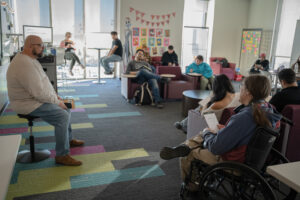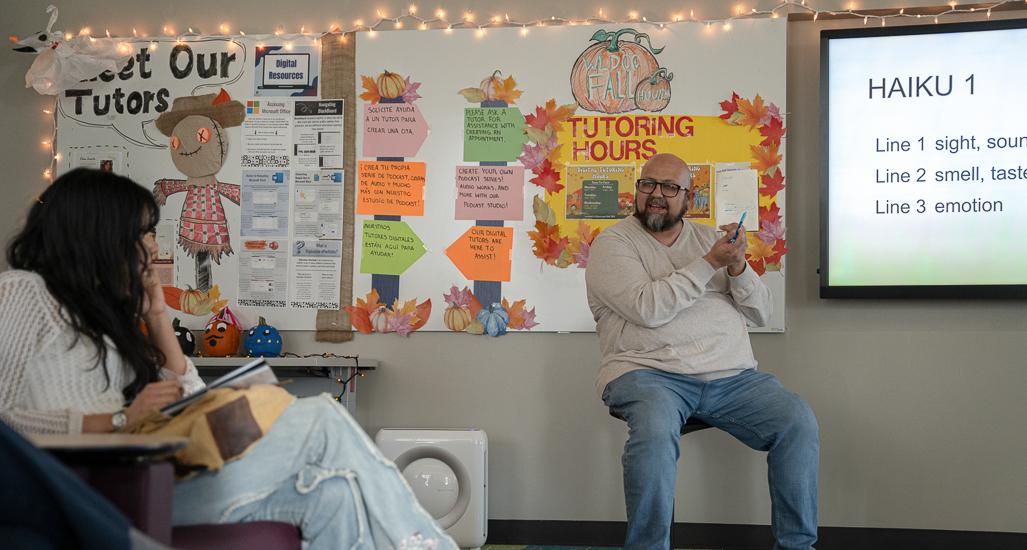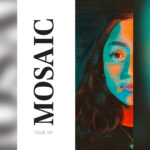San Antonio Poet Laureate Eduardo Vega engaged with students last week how freshly baked sweet bread can explore deep messages of religion and culture in poetry.
Vega narrated Texas Poet Laureate Jesse Cardona’s poem “Pan Dulce.” The poem shared how Cardona’s trips to “la panaderia with abuelo” after confession at St. Joseph’s Catholic Church signified a new beginning.
“Nothing like dulcified bread, for crucified bones.”
Vega held a writing workshop with the Writing Club of Texas A&M University-San Antonio Nov. 20 in Room 304 of Classroom Hall Building.
The city of San Antonio appointed Vega as poet laureate this year. Glimpses of his art form can be seen throughout San Antonio’s urban areas, including sculpture Poet’s Pointe at Poet’s Pointe Park and along the San Pedro Creek Cultural Park.
Vega is known for associating his poems with food and his deep roots in Tejano culture creating a nickname of a “Taco” poet for himself.
“That’s more about what I like to write about the experience of, you know, having tacos with people,” Vega said.
Food in Vega’s point of view can be conveyed in variety of different meanings and expressions.
“Food poetry isn’t about food. Food is about culture. Food is about language. Food is about gatherings, spaces, and your family. Food is about history and trauma,’’ Vega said.
Vega also understands the importance of reading and teaching not only food poetry, but poetry itself.
Vega showed many unique ways to shape a poem about food, whether it’s creating “recipes” or talking about the food journey.
Vega emphasized this to show that representation is a focal point in his poems.
“Chicken bamboo shoots…saucy, spicy, and yummy,” Vega said. “Strangely…it’s like home.”
Vega shared his own example of a food haiku, on how something as exotic as Chinese food provides nostalgia, bringing him back to his Tejano roots.
“It’s a fulfillment, I think because nobody ever really taught me poetry,” Vega said.
“Certainly when I was reading poetry from other people nobody looked or sounded like me, so I really appreciate not just teaching young adults, but teaching young adults who are of color.”
Vega emphasized this to show that representation is a focal point in his poems.
Robert Cavazos, an English professor at A&M-San Antonio, found the workshop helpful as he finds himself struggling on how to begin poems occasionally.
“It’s something that I don’t always write about, but I think I’ll try and write more food poems now,” Cavazos said.
Vega focused his workshop on the format of haiku. This poetry style consists of concise amounts of syllables distributed within three lines: five syllables in the first line, seven on the second line and five on the last line.
“I think haikus are a great format,” Cavazos said. “I think it’s a good exercise for being more concise with your poetry.”
Dr. Marcos J Del Hierro, an English professor at A&M- San Antonio, attended and appreciated Vega’s insights.
“It’s a nice spot to focus on writing that’s not specifically the kind of writing I do all the time,” Del Hierro said of the workshops that he frequently attends. “And I was excited to meet with a working poet and get to do the workshop,”
Del Hierro said he was fond of Vega’s work from social media and attended to see what new methods he could apply to his own skillset. He has his own experience writing food poems.
“No, I already knew it all,” Del Hierro joked. “It was experimenting with forms and using it in different ways of unlocking memories.”
Leahni Jimenez, A&M-San Antonio’s Writing Club president, said the turnout for the workshop was as expected. Aside from Writing Club members, individuals from A&M-San Antonio’s Language, Literature, and Arts Department attended due to Vega’s popularity.
Jimenez’s takeaways from the workshop were that it helped her elevate her writing technique, and expand her horizons when it comes to learning new skills in poetry.

Jimenez said a main focus for the Writing Club is to grow by actively hosting meetings and workshops.
“A common thing we do for the writing club is hold workshops, with either poet laureates, professors, and really anyone we reach out to or reaches out to us,” Jimenez said.
“The Writing Club, we welcome everything and everyone,” Jimenez said. “Whether it comes to the most inexperienced writers or those who have already published novels.”
Although writing can sometimes be intimidating, Jimenez said that writing is a form of expression and emotions.
“It’s a space to speak out and share,” Jimenez said. “There’s never going to be any judgments in the writing club, and just by showing up to the meetings, you become a member.”







